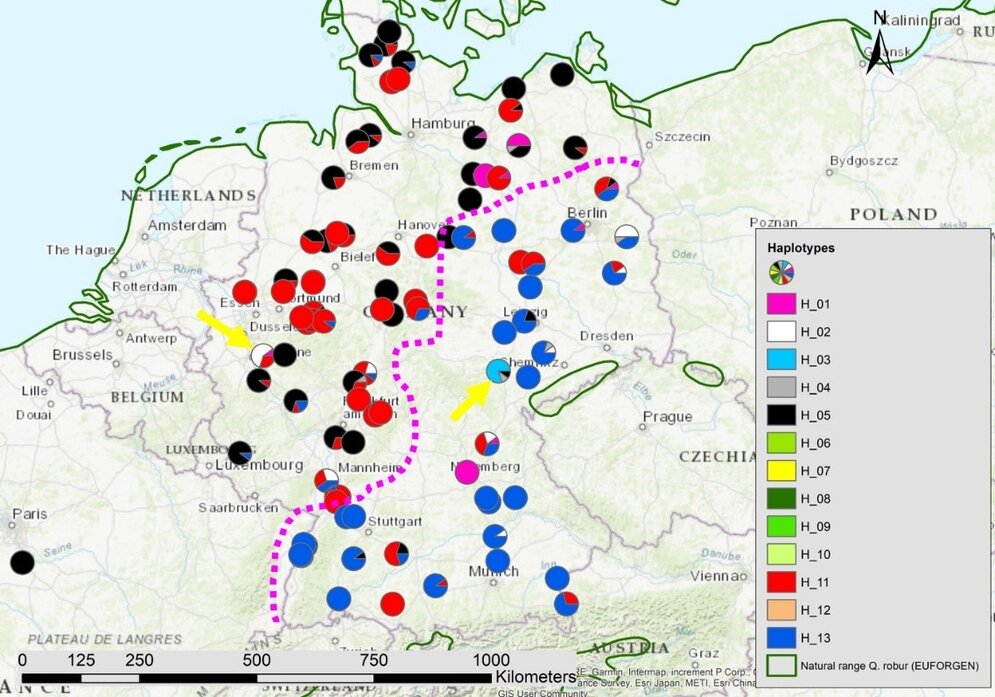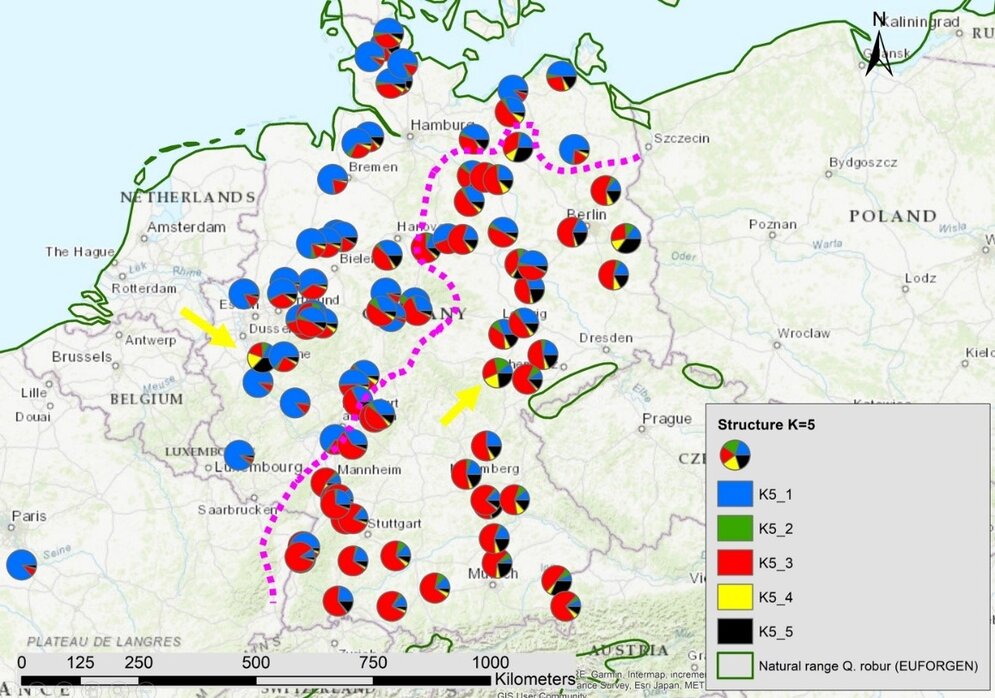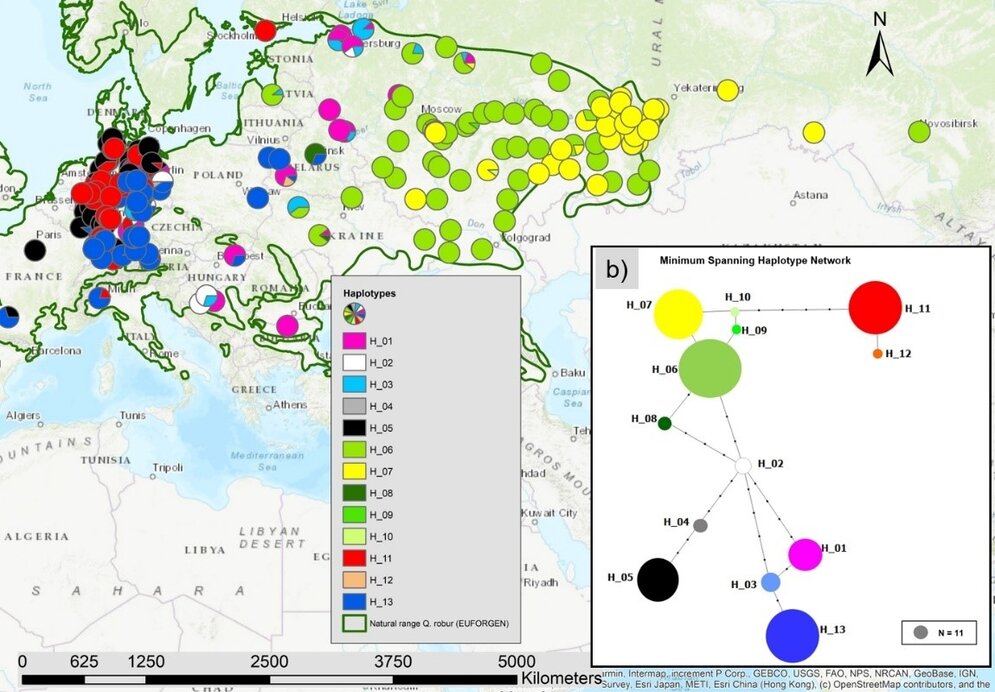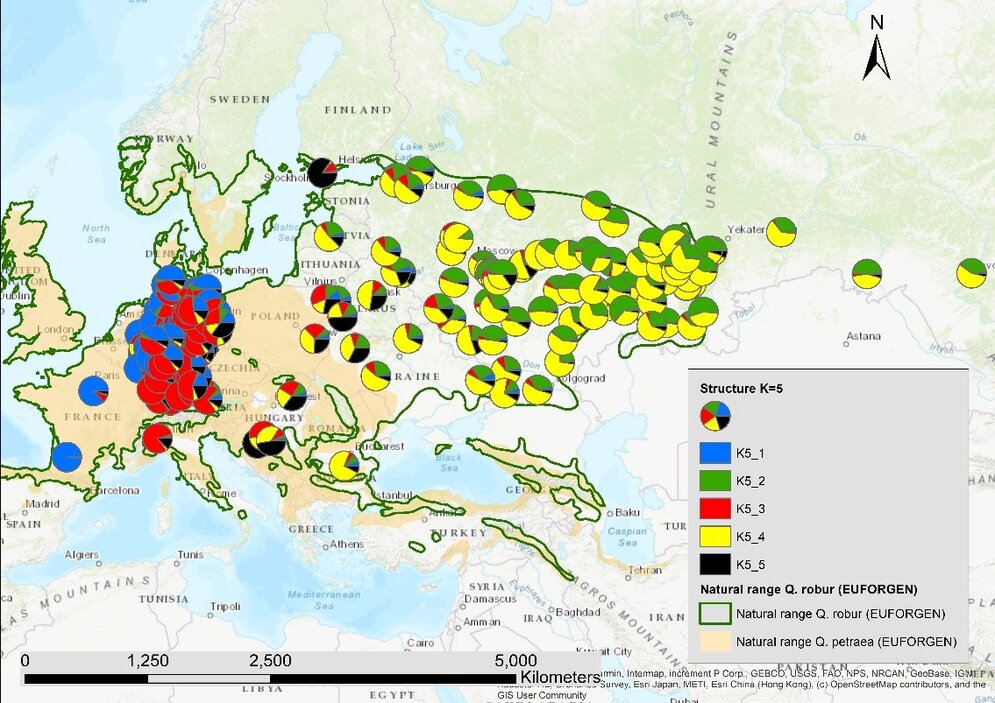New publication on large-scale genetic structure of pedunculate oaks in Europe
Recently, four scientists of the Thuenen-Institute of Forest Genetics (Bernd Degen, Céline Blanc-Jolivet, Malte Mader und Hilke Schröder) together with a Russian research group at the Agrarian University in Ufa have published results of the large-scale genetic inventory of 1,970 pedunculate oaks from 13 European countries in the journal FORESTS.
The study at 381 variable gene loci of the nucleus and the plastids of the pedunculate oaks did reveal a clear spatial genetic pattern (figure 1). The presents day genetic composition of pedunculate oaks in Europe is the result of re-colonization from glacial refugia, gene flow by pollen and hybridization with sessile oaks. The impact of artificial regeneration of stands with non-local seed sources is visible but did not change the general pattern. In Germany the pedunculate oaks are genetically subdivided in two main groups: in North and West Germany the pedunculate oaks are different from the pedunculate oaks in South and East-Germany (figure 2). Reasons for these differences are different postglacial re-colonization routes and a greater proportion of the sessile oak genome in the pedunculate oaks of North and West Germany.
Detailed Information:
Degen, B., Yanbaev, Y., Mader, M., Ianbaev, R., Bakhtina, S., Schroeder, H., & Blanc-Jolivet, C. (2021). Impact of Gene Flow and Introgression on the Range Wide Genetic Structure of Quercus robur (L.) in Europe. Forests, 12(10), 1425.
Link to the original publication: https://doi.org/10.3390/f12101425
Report: 19/11/2021 | Bernd Degen (TB)



![[Translate to English:] [Translate to English:]](/media/_processed_/f/3/csm_2022_Titelbild_gross2_Saatgut_in_Hand_9ffb8f5748.jpg)
![[Translate to English:] [Translate to English:]](/media/_processed_/f/3/csm_2022_Titelbild_gross2_Saatgut_in_Hand_c17270fcc0.jpg)







